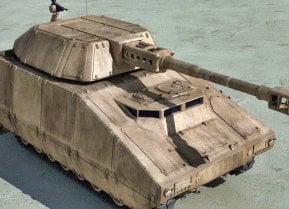Pilot Saved: How an F-14 Tomcat Somehow Landed with Stuck Wings
F-14s had variable swept wings that adjusted to changes in speed. Sometimes the wings failed and became stuck in the swept position. This could keep the Tomcat from landing successfully.
An Almost F-14 Disaster - Despite their intricate choreography, aircraft carrier operations usually go off without a hitch.
The aviators and flight deck personnel rehearse and execute their tasks so well that the carrier becomes an efficient, safe, and successful floating airport.
But sometimes there are close calls – situations that push pilots and crew to their limits to avert tragedy. F-14 Tomcats also took off and landed on conventional air strips – an activity that usually didn’t pose problems, especially compared to carrier-based maneuvers. But this time was different.
This is the story of an F-14 Tomcat pilot who had to conduct emergency maneuvers to make sure his fighter didn’t crash.
What If the F-14's Wings Were Stuck Before Landing?
Aviation Geek Club recounted the dangerous sequence of events.
F-14s had variable swept wings that adjusted to changes in speed. Sometimes the wings failed and became stuck in the swept position. This could keep the Tomcat from landing successfully.
F-14 pilot Mark Vizcarra always wondered what would happen if his aircraft’s wings were ever stuck in the swept-back position and he had to land. When he asked his instructors in flight school what he should do during this type of emergency, they said not to worry, as this had never happened before. The hazard wasn’t addressed in the airplane’s manual, either.
But the wings did have manual control. If they were stuck, the pilot could activate the movement of the wings by hand. Vizcarra even rehearsed this maneuver in the flight simulator, because he had a funny feeling the emergency could happen to him someday. It’s a good thing he did, because four years later, his wings got stuck, and he would have to execute what he prepared for so diligently.
Instead of carrier flight deck operations, Vizcarra was training with the U.S. Air Force over Arkansas. This was in 1992, right after Operation Desert Storm. Vizcarra was flying with F-15 Eagles. The aviator was playing the role of a Soviet fighter, imitating a Su-27 to help F-15 pilots train for dogfights. Vizcarra was flying close to Mach-1, with his wings completely swept back.
F-14 Near Disaster: What Happened?
Vizcarra described the situation.
“The Tomcat had a natural tendency to buffet under high-G with the wings back, but it would always diminish as the wings adjusted to their optimum position. I knew something was wrong when the buffeting never subsided. I quickly took my eyes off the Eagles to check my wings and sure enough, they were still swept back.
“I immediately took manual control of the wings and maneuvered the wing lever into the proper position while staying in the fight and pulling the maximum Tomcat G. I knew I was in trouble when I glanced back and noticed the wings hadn’t moved. I hastily called ‘Knock it Off’ to stop the engagement and recovered the Tomcat to level flight.”
Vizcarra’s radio intercept officer, Rick “Rico” Jordan, declared they would need to fly back to base, pronto. They had to scoot all the way to Dallas to land, but this gave Vizcarra and Jordan time to devise a plan – this was going to be one wild landing. Those wings were still stuck in position.
The situation was especially dangerous because the airplane had no flaps and could not use wing spoilers to slow down once it hit the runway. Vizcarra calculated he would approach at a much higher speed than normal, and the runway was only 8,000 feet long. Could he land without incident? The airplane was going to come in like a speeding bullet.
Helping matters somewhat was that the runway had arresting gear, just like a carrier, to simulate these types of landings.
Jordan worried the plan wouldn’t work, but Vizcarra kept relying on his training. “We dumped fuel to lighten the weight to get the approach airspeed as low as possible, but I saved enough gas to make it to Carswell if my plan didn’t work and I had to wave off,” Vizcarra says. “As we started our approach, the Commanding Officer radioed me that the emergency vehicles were in position and that LSOs (Landing Signal Officers) were on station and ready for recovery.
“Luckily, all those approaches I practiced in the trainer helped me land the Tomcat exactly where I wanted and sure enough, it worked. My hook snagged the arrestment cable right at the maximum allowable speed and it operated as advertised even though I pulled every inch of available cable down the runway.”
Bullet With Tires
The LSOs were thrilled it worked. One said “man…you’re like a bullet with tires–we didn’t even have time to transmit back when you called the ball!” After this close call, Vizcarra always had confidence to land in bad weather, at night, or in choppy seas. He was able to tell this story with a sense of wonder.
About the Author
Brent M. Eastwood, PhD, is the author of Humans, Machines, and Data: Future Trends in Warfare. He is an Emerging Threats expert and former U.S. Army Infantry officer. You can follow him on Twitter @BMEastwood.
Image Credit: Shutterstock.


